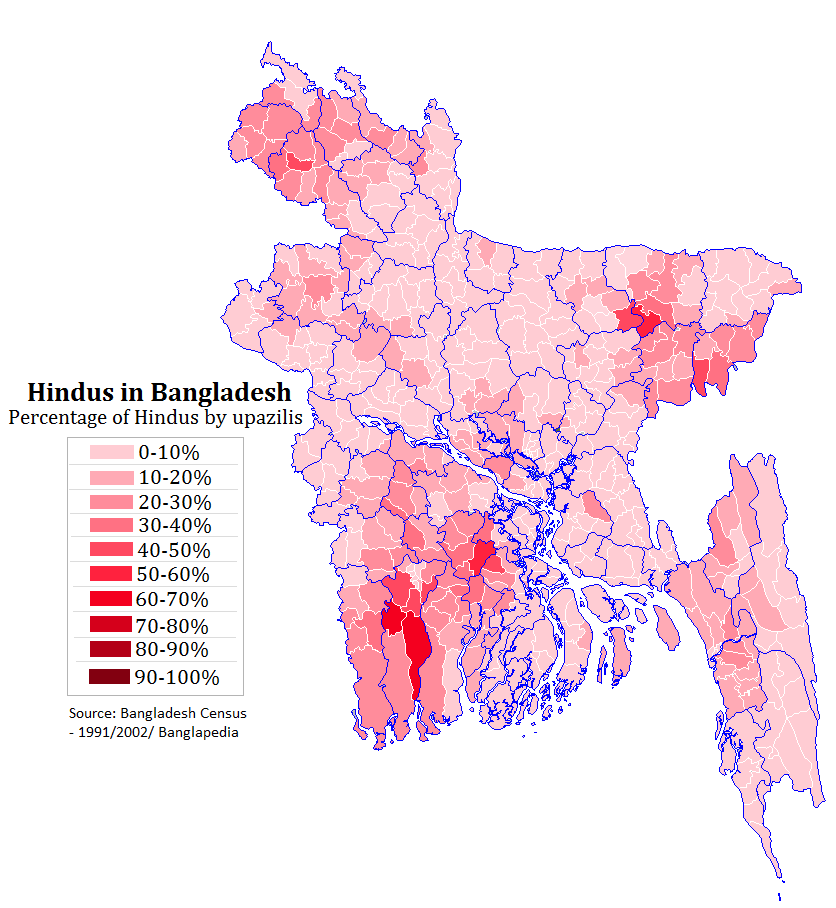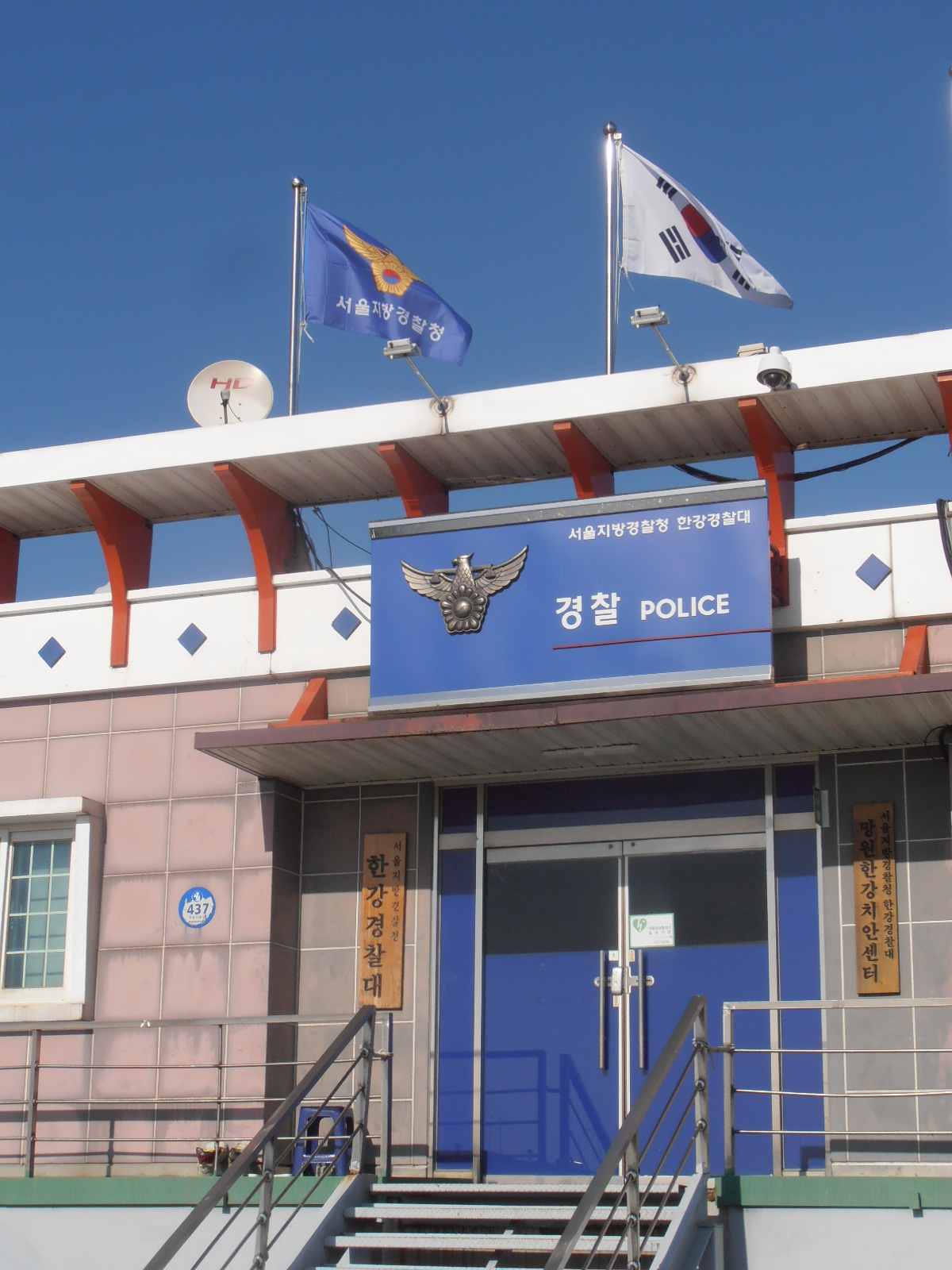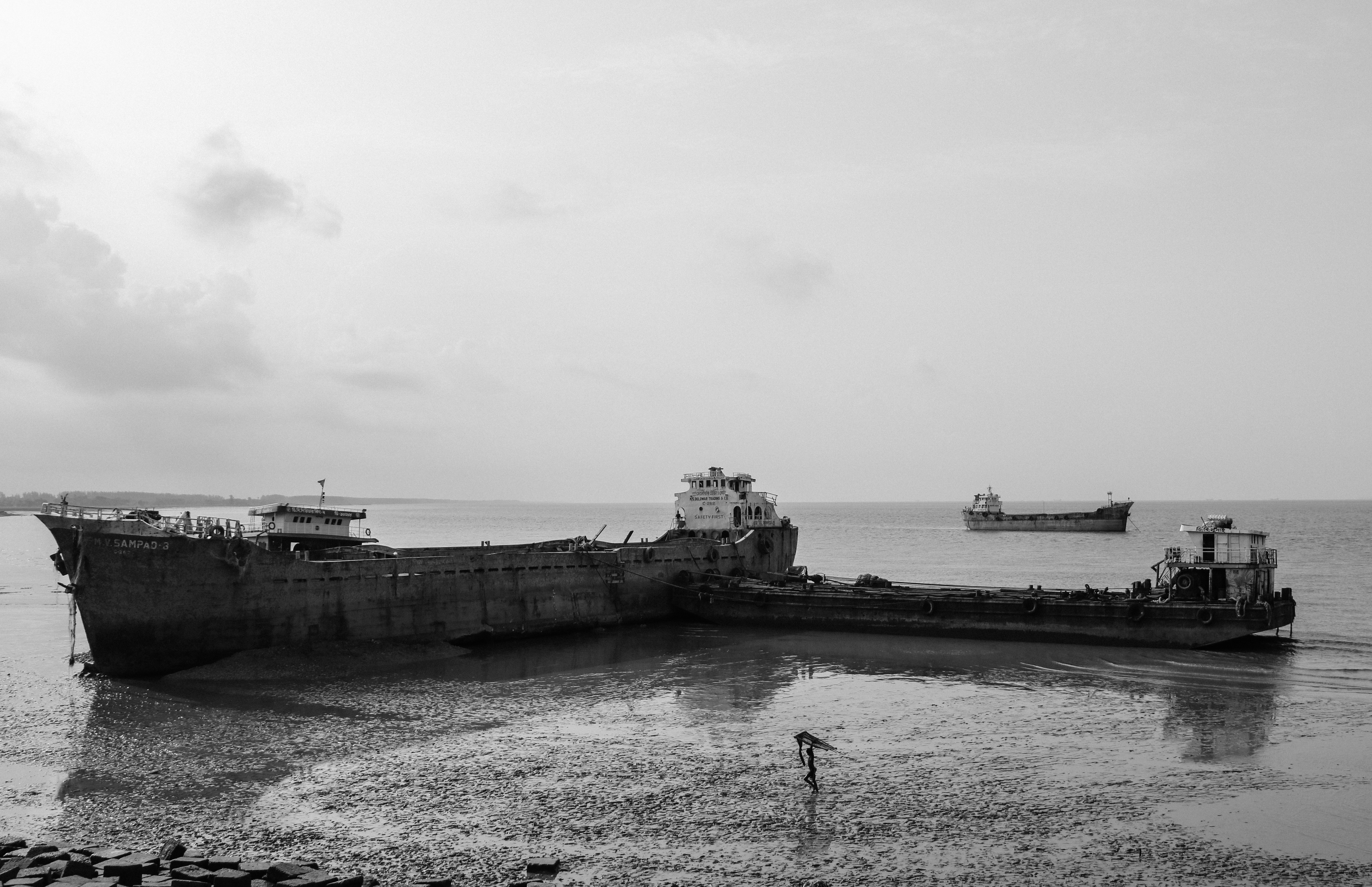|
Lakshmipur District
Lakshmipur ( bn, লক্ষ্মীপুর, Lokkhipur), also spelt Laxmipur, with an area of 1455.96 km2, is a district of Bangladesh. It is bordered by Chandpur to the north, Bhola and Noakhali districts to the south, Noakhali to the east, and Barisal and Bhola districts to the west. Lakshmipur was the part of Noakhali until 15 February 1984. Administration The district of Lakshmipur consists of 4 municipalities, 58 union parishads, 514 villages, 3539 mosques, 45 temples, and 1 church. The upazilas under this district are: * Lakshmipur Sadar Upazila *Ramganj Upazila *Raipur Upazila * Ramgati Upazila * Kamalnagar Upazila Police stations There are 6 police stations in Lakshmipur. # Lakshmipur Model Thana # Ramganj Thana # Raipur Thana # Ramgati Thana # Kamalnagar Thana # Chandragonj Thana Demographics According to the 2011 Bangladesh census, Lakshmipur District had a population of 1,729,188, of which 827,780 were males and 901,408 females. Rural population ... [...More Info...] [...Related Items...] OR: [Wikipedia] [Google] [Baidu] |
Union Councils Of Bangladesh
Union council ( bn, ইউনিয়ন পরিষদ, translit=iūniyan pariṣad, translit-std=IAST), also known as union parishad, rural council, rural union and simply union, is the smallest rural administrative and local government unit in Bangladesh. Each union council is made up of nine wards. Usually one village is designated as a ward. There are 4,562 unions in Bangladesh. A union council consists of a chairman and twelve members including three members exclusively reserved for women. Union councils are formed under the ''Local Government (Union Parishads) Act, 2009''. The boundary of each union council is demarcated by the Deputy Commissioner of the District. A union council is the body primarily responsible for agricultural, industrial and community development within the local limits of the union. History The term ''union'' dates back to the 1870 British legislation titled the ''Village Chowkidari Act'' which established union ''panchayats'' for collecting tax ... [...More Info...] [...Related Items...] OR: [Wikipedia] [Google] [Baidu] |
A Road To Dhaka From Lakshmipur At Dust, Photo-- Ahsan
A, or a, is the first letter and the first vowel of the Latin alphabet, used in the modern English alphabet, the alphabets of other western European languages and others worldwide. Its name in English is ''a'' (pronounced ), plural ''aes''. It is similar in shape to the Ancient Greek letter alpha, from which it derives. The uppercase version consists of the two slanting sides of a triangle, crossed in the middle by a horizontal bar. The lowercase version can be written in two forms: the double-storey a and single-storey ɑ. The latter is commonly used in handwriting and fonts based on it, especially fonts intended to be read by children, and is also found in italic type. In English grammar, " a", and its variant " an", are indefinite articles. History The earliest certain ancestor of "A" is aleph (also written 'aleph), the first letter of the Phoenician alphabet, which consisted entirely of consonants (for that reason, it is also called an abjad to distinguish it fro ... [...More Info...] [...Related Items...] OR: [Wikipedia] [Google] [Baidu] |
Hindus
Hindus (; ) are people who religiously adhere to Hinduism.Jeffery D. Long (2007), A Vision for Hinduism, IB Tauris, , pages 35–37 Historically, the term has also been used as a geographical, cultural, and later religious identifier for people living in the Indian subcontinent. The term ''"Hindu"'' traces back to Old Persian which derived these names from the Sanskrit name ''Sindhu'' (सिन्धु ), referring to the river Indus. The Greek cognates of the same terms are "''Indus''" (for the river) and "''India''" (for the land of the river). The term "''Hindu''" also implied a geographic, ethnic or cultural identifier for people living in the Indian subcontinent around or beyond the Indus River, Sindhu (Indus) River. By the 16th century CE, the term began to refer to residents of the subcontinent who were not Turkic peoples, Turkic or Muslims. Hindoo is an archaic spelling variant, whose use today is considered derogatory. The historical development of Hindu self-i ... [...More Info...] [...Related Items...] OR: [Wikipedia] [Google] [Baidu] |
Muslims
Muslims ( ar, المسلمون, , ) are people who adhere to Islam, a monotheistic religion belonging to the Abrahamic tradition. They consider the Quran, the foundational religious text of Islam, to be the verbatim word of the God of Abraham (or '' Allah'') as it was revealed to Muhammad, the main Islamic prophet. The majority of Muslims also follow the teachings and practices of Muhammad ('' sunnah'') as recorded in traditional accounts (''hadith''). With an estimated population of almost 1.9 billion followers as of 2020 year estimation, Muslims comprise more than 24.9% of the world's total population. In descending order, the percentage of people who identify as Muslims on each continental landmass stands at: 45% of Africa, 25% of Asia and Oceania (collectively), 6% of Europe, and 1% of the Americas. Additionally, in subdivided geographical regions, the figure stands at: 91% of the Middle East–North Africa, 90% of Central Asia, 65% of the Caucasus, 42% of Southeast Asi ... [...More Info...] [...Related Items...] OR: [Wikipedia] [Google] [Baidu] |
Hinduism In Bangladesh
Hinduism is the second largest religious affiliation in People's Republic of Bangladesh, as according to the Official 2022 Census of Bangladesh, approximately just 13.1 million people responded that they were Hindus, constituting 7.95% out of the total population of 165.15 million people. In terms of population, Bangladesh is the third-largest Hindu populated country of the world, just after India and Nepal. Hinduism is the second-largest religion in 61 out of 64 districts of Bangladesh, but there is no Hindu majority district in Bangladesh. Culture In nature, Bangladeshi Hinduism closely resembles the forms and customs of Hinduism practiced in the neighboring Indian state of West Bengal, with which Bangladesh (at one time known as East Bengal) was united until the partition of India in 1947. The vast majority of Hindus in Bangladesh are Bengali Hindus. Goddess ( Devi) – usually venerated as Durga or Kali – is widely revered, often alongside her consort Shiva. The w ... [...More Info...] [...Related Items...] OR: [Wikipedia] [Google] [Baidu] |
Islam In Bangladesh
Islam is the state religion of the People's Republic of Bangladesh. According to the 2022 census, Bangladesh had a population of about 150 million Muslims, or 91.04% of its total population of million. The majority of Bangladeshis are Sunni, and follow the Hanafi school of fiqh. Religion is an integral part of Bangladeshi identity. Despite being a Muslim-majority country, Bangladesh is a ''de facto'' secular state. In the 9th century, Arab Muslims established commercial as well as religious connection within the region before the conquest, mainly through the coastal regions as traders and primarily via the ports of Chittagong. Region was largely inhabited by different animistic tribes. Arab navigation in the region was the result of the Muslim reign over the Indus delta. In the early 13th century, Muhammad bin Bakhtiyar Khalji conquered Western and part of Northern Bengal, and established the first Muslim kingdom in Bengal. Islamic missionaries in India achieved their greatest ... [...More Info...] [...Related Items...] OR: [Wikipedia] [Google] [Baidu] |
Bangladesh Bureau Of Statistics
The Bangladesh Bureau of Statistics (BBS) is the centralized official bureau in Bangladesh for collecting statistics on demographics, the economy, and other facts about the country and disseminating the information. History Although independent statistical programs had existed in the country before, they were often incomplete or produced inaccurate results, which led the Government of Bangladesh establishing an official bureau in August 1974, by merging four of the previous larger statistical agencies, the Bureau of Statistics, the Bureau of Agriculture Statistics, the Agriculture Census Commission and the Population Census Commission. In July 1975, the Statistics and Informatics Division was created under the Planning Ministry (Bangladesh) and tasked to oversee the BBS. Between 2002 and 2012, the division remained abolished but was later reinstated. The Bangladesh Bureau of Statistics is headquartered in Dhaka Dhaka ( or ; bn, ঢাকা, Ḍhākā, ), formerly ... [...More Info...] [...Related Items...] OR: [Wikipedia] [Google] [Baidu] |
2011 Bangladesh Census
In 2011, the Bangladesh Bureau of Statistics, conducted a national census in Bangladesh, which provided a provisional estimate of the total population of the country as 142,319,000. The previous decennial census was the 2001 census. Data were recorded from all of the districts and upazilas and main cities in Bangladesh including statistical data on population size, households, sex and age distribution, marital status, economically active population, literacy and educational attainment, religion, number of children etc. Bangladesh and India also conducted their first joint census of areas along their border in 2011. According to the census, Hindus constituted 8.5 per cent of the population as of 2011, down from 9.6 per cent in the 2001 census. Bangladesh have a population of 144,043,697 as per 2011 census report. Majority of 130,201,097 reported that they were Muslims, 12,301,331 reported as Hindus, 864,262 as Buddhists, 532,961 as Christians and 201,661 as others. See also * ... [...More Info...] [...Related Items...] OR: [Wikipedia] [Google] [Baidu] |
Police Station
A police station (sometimes called a "station house" or just "house") is a building which serves to accommodate police officers and other members of staff. These buildings often contain offices and accommodation for personnel and vehicles, along with locker rooms, temporary holding cells and interview/interrogation rooms. Names Large departments may have many stations to cover the area they serve. The names used for these facilities include: *Barracks for many American state police and highway patrol stations and in Ireland *District office, typically used by American state police forces like the California Highway Patrol, but also used by smaller departments like the Calgary Police Service *Precinct house, or precinct, for some urban police departments in the United States such as the New York City Police Department, Memphis Police Department, and Newark Police Department, where stations are in charge of precincts *Police house *Police office, especially in Scotland *Statio ... [...More Info...] [...Related Items...] OR: [Wikipedia] [Google] [Baidu] |
Kamalnagar Upazila
Kamalnagar is an upazila of Lakshmipur District in the Division of Chittagong, Bangladesh. Administration Kamalnagar Upazila is divided into nine union parishads: Char Folcon, Char Kadira, Char Kalkini, Char Lawrench, Char Martin, Hajirhat, Patarirhat, Shaheberhat, and Torabgonj. The union parishads are subdivided into 33 mauzas and 33 villages. See also *Upazilas of Bangladesh An ''upazila'' ( bn, উপজেলা, upôzela, lit=sub-district pronounced: ), formerly called ''thana'', is an administrative region in Bangladesh, functioning as a sub-unit of a district. It can be seen as an analogous to a county or a ... * Districts of Bangladesh * Divisions of Bangladesh References Upazilas of Lakshmipur District {{Chittagong-geo-stub ... [...More Info...] [...Related Items...] OR: [Wikipedia] [Google] [Baidu] |
Ramgati Upazila
Ramgati ( bn, রামগতি, Ramgôti) is an upazila (sub-district) of Lakshmipur District in Bangladesh, part of the Chittagong Division. The Government of Bangladesh plans to build an airport in this upazila. History Ramgati is home to historic infrastructure such as the Bedar Bakhsh Mosque in Borokheri. The origin of Ramgati is said to have been from a man named Ramkrishna who had a large mercantile centre in the area known as a ''gôdi'' in the Bengali language. From this, the area came to be known as ''Ramer gadi'' (meaning Ram's godi) and was later corrupted into Ramgati. Initially, a thana was established in the Borokheri Union in 1862. In 1933, the Baluchar Islamia Senior Alim Madrasa was founded. Five years later, the Char Alexander Alia Madrasa opened. In 1957, the Government of Pakistan's Irrigation Department constructed the earthen 13.68km ''Meghna Cross-Dam I'' across a major branch of the Meghna River which flowed between Ramgati and the Noakhali mainland. As ... [...More Info...] [...Related Items...] OR: [Wikipedia] [Google] [Baidu] |

.jpg)




